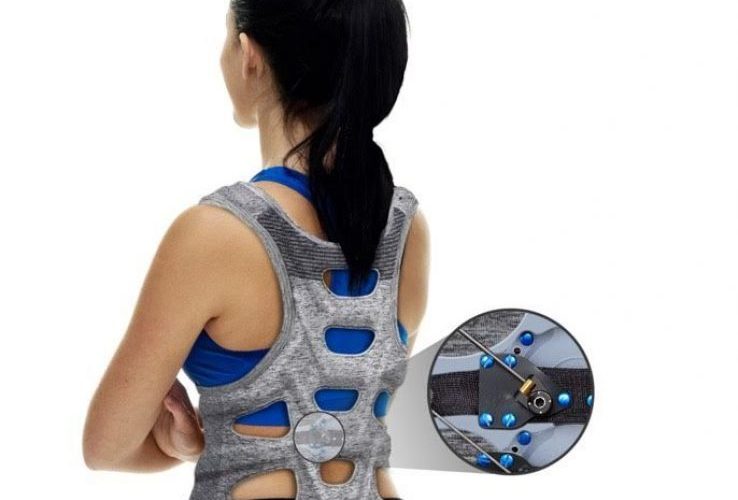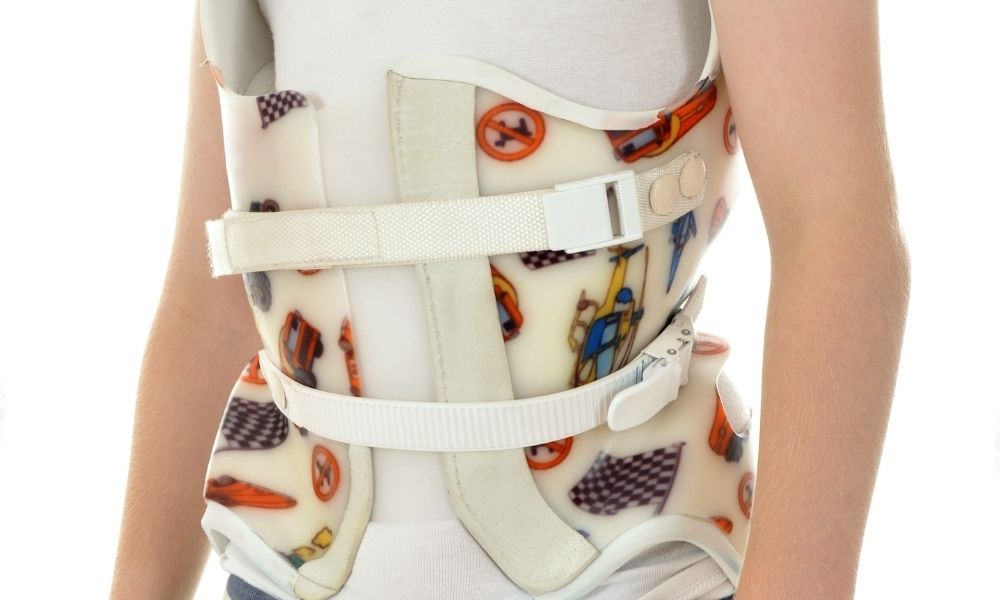Explore the latest innovations in scoliosis medical devices, from braces to surgical tools, and learn how they help manage spinal curvature and improve quality of life.
Introduction
Scoliosis, a condition that causes abnormal curvature of the spine, affects millions of people worldwide, especially during adolescence. While mild cases may not require intervention, more severe forms of scoliosis need treatment to prevent further curvature and potential health complications. In addressing scoliosis, medical devices play a crucial role in managing the condition, providing support, and even correcting spinal curvature. This comprehensive post will delve into various scoliosis medical devices, offering insight into their usage, effectiveness, and impact on individuals with scoliosis.
Understanding Scoliosis and Its Treatment Needs
Before diving into scoliosis medical devices, it’s essential to grasp the condition itself. Scoliosis is more than just an unusual curvature; it can cause serious health issues if left untreated. A spine that curves in an S or C shape can affect posture, balance, and even lung function. Therefore, timely intervention is crucial. The goal of treatment often involves halting the progression of the curve, minimizing discomfort, and in some cases, correcting the curvature. Each case of scoliosis is unique, and that’s why medical devices are so vital in offering personalized solutions. From braces that prevent further curvature to surgical tools that enable fusion of the spine, scoliosis medical devices provide a wide range of options tailored to each individual.
The Importance of Early Diagnosis
In managing scoliosis, early diagnosis plays a pivotal role. Detecting scoliosis early allows healthcare providers to intervene before the condition worsens. The more advanced the curvature becomes, the more invasive the treatment options may be. Devices like braces are far more effective in children and adolescents whose bones are still growing. In this sense, scoliosis medical devices serve not only as a form of treatment but also as preventive tools that stop scoliosis from progressing to a stage where surgery becomes necessary. Thus, it’s essential to focus on early detection through regular check-ups, especially for children going through growth spurts.
Bracing as a First Line of Defense
When it comes to non-invasive treatment options for scoliosis, braces are among the most common and effective medical devices. They are primarily used for children and adolescents who are still growing, as their main purpose is to prevent the spine from curving further. There are several types of braces available, each serving different levels of curvature and patient needs. Wearing a brace can often be uncomfortable, but the payoff is substantial in terms of preventing further curvature, reducing the likelihood of surgery, and improving quality of life.
The Boston Brace: A Leading Option
The Boston Brace is a thoracolumbosacral orthosis (TLSO) that is widely used to treat moderate scoliosis. Made of rigid plastic, it wraps around the torso and applies corrective pressure to areas of the spine that need adjustment. The Boston Brace is customized to each patient, ensuring maximum effectiveness. While it may seem restrictive, this brace is one of the most effective scoliosis medical devices available for non-surgical intervention. It allows for some mobility, which is crucial for patients who want to maintain an active lifestyle. As one of the leading scoliosis medical devices, the Boston Brace exemplifies how non-invasive treatments can yield remarkable results.

The Milwaukee Brace: A Traditional Approach
Another widely recognized option among scoliosis medical devices is the Milwaukee brace. While less commonly used today due to the advent of more aesthetically pleasing braces like the Boston brace, the Milwaukee brace is still an option for certain patients. It’s particularly effective for treating high thoracic curves. The brace has a metal structure with a neck ring, making it more noticeable but highly effective for specific types of spinal curvature. Its long history of success makes it a valuable scoliosis medical device for particular cases, even though newer designs have largely taken its place.
Other Brace Options: TLSO and Corset Braces
In addition to the Boston and Milwaukee braces, other scoliosis medical devices fall under the category of braces, such as the TLSO and corset braces. TLSO braces are more flexible and cater to patients with lower spinal curvatures, while corset braces provide minimal support and are often used in less severe cases. Although these braces are generally less invasive and noticeable, their effectiveness in managing scoliosis is still noteworthy. By preventing further curvature and helping to realign the spine, these scoliosis medical devices serve as essential tools in the non-surgical treatment arsenal.
Surgical Options: Spinal Fusion and Its Devices
In more severe cases of scoliosis, where bracing is insufficient, surgical intervention may be required. Spinal fusion is one of the most common surgical treatments for scoliosis, involving the permanent joining of two or more vertebrae. Various scoliosis medical devices assist in this procedure, such as rods, screws, and cages. These devices stabilize the spine while the bones fuse together, providing long-term support. Spinal fusion surgery is typically reserved for cases where the spinal curvature is extreme and rapidly progressing, and the success rate for such procedures is high due to advances in medical technology.
Rods: Stabilizing the Spine
In the spinal fusion process, rods are among the most crucial scoliosis medical devices. These stainless steel or titanium rods are attached to the spine with screws or hooks to provide stability and keep the spine in the correct position during the fusion process. The rods are custom-fitted to each patient, ensuring they offer the necessary support. Over time, the spine heals and fuses around these rods, reducing the curvature and providing long-term correction. Rods are one of the primary devices used in scoliosis surgeries and are highly effective in improving spinal alignment.
Screws and Hooks: Holding It All Together
Screws and hooks are another essential category of scoliosis medical devices used during spinal fusion surgery. These devices attach to the spine, providing a stable base for the rods. Together, they hold the vertebrae in place while the bones fuse over time. Advances in screw and hook technology have improved the outcomes of spinal fusion surgeries, making the procedure safer and more effective. By providing strong, stable support, these scoliosis medical devices ensure that the spine remains in the correct alignment, even during recovery.
Cages and Interbody Devices
In addition to rods, screws, and hooks, cages and interbody devices are used in some cases of spinal fusion surgery. These scoliosis medical devices are placed between the vertebrae to maintain proper disc height and help the bones fuse. They are often made of materials like titanium or PEEK (polyether ether ketone) and are designed to promote healing while ensuring the spine remains aligned. Like other scoliosis medical devices, these interbody devices have revolutionized the way scoliosis is treated surgically, offering patients more options for effective treatment.
Post-Surgical Recovery and Devices
After spinal fusion surgery, patients often need additional scoliosis medical devices to aid in recovery. These devices help ensure the spine heals correctly and that the patient maintains proper posture. One such device is the post-operative brace, which provides extra support while the bones continue to fuse. Physical therapy tools, like exercise bands and balance boards, also play a role in the rehabilitation process. These scoliosis medical devices work in tandem with surgical interventions to provide comprehensive care for scoliosis patients, ensuring long-term success in managing their condition.
Posture Correctors: Supporting Everyday Life
For individuals who may not require surgery but still need help maintaining proper spinal alignment, posture correctors are an excellent solution. These scoliosis medical devices are typically worn around the shoulders and back, reminding patients to maintain good posture throughout the day. While they don’t offer the same level of correction as braces, posture correctors provide valuable support for individuals with mild scoliosis or those recovering from surgery. These devices are especially useful for adults who may have developed scoliosis later in life.
Physical Therapy Tools: Enhancing Strength and Flexibility
Physical therapy is a critical component of scoliosis treatment, and several devices assist in the process. Tools like exercise balls, resistance bands, and foam rollers help scoliosis patients build strength and flexibility in the muscles supporting their spine. By incorporating these devices into a daily routine, patients can improve their posture, reduce pain, and enhance their overall quality of life. These scoliosis medical devices, although not directly involved in spinal correction, play an essential role in managing the condition and preventing further curvature.
Monitoring Devices: Tracking Progress
In treating scoliosis, it’s essential to monitor the progression of the condition over time. Scoliometer devices, which measure the angle of trunk rotation, help doctors and patients track changes in spinal curvature. These scoliosis medical devices are non-invasive and provide a quick, reliable way to assess the effectiveness of treatment. Additionally, advances in 3D imaging technology allow for more detailed assessments of the spine, offering valuable information for both non-surgical and surgical treatment planning.
Advances in Scoliosis Medical Devices
The field of scoliosis treatment has seen remarkable advances in recent years, particularly in the development of medical devices. From improved bracing techniques to cutting-edge surgical tools, scoliosis medical devices have evolved to offer more effective, less invasive options for patients. New materials like titanium and carbon fiber have made devices lighter, stronger, and more comfortable for patients. These innovations are providing hope for individuals living with scoliosis, making treatment more accessible and improving outcomes across the board.

The Role of Technology in Scoliosis Treatment
Technology continues to play a significant role in the development of scoliosis medical devices. Robotic-assisted surgery, for example, is becoming more common in spinal fusion procedures, improving precision and reducing recovery times. 3D printing technology is also being used to create custom braces and surgical implants, allowing for a more tailored approach to treatment. As technology advances, scoliosis medical devices will likely become even more effective, offering patients better options for managing their condition.
Cost Considerations for Scoliosis Medical Devices
One important aspect of scoliosis treatment is the cost of medical devices. Braces, surgical tools, and rehabilitation equipment can be expensive, and not all insurance plans cover these costs. For families dealing with scoliosis, financial assistance programs and payment plans may be necessary to afford the required devices. However, the long-term benefits of scoliosis medical devices far outweigh the initial cost, as they can prevent more severe health issues down the line.
Choosing the Right Scoliosis Medical Devices
Selecting the right scoliosis medical devices depends on several factors, including the severity of the curvature, the patient’s age, and the stage of growth. For younger patients, braces are often the best option, while older individuals or those with more severe cases may require surgical intervention. Consulting with a specialist is crucial in determining the best course of action, as each patient’s needs are unique. With the right scoliosis medical devices, patients can manage their condition effectively and live healthy, active lives.
The Psychological Impact of Scoliosis Medical Devices
While scoliosis medical devices provide essential physical support, they can also have a psychological impact on patients. Wearing a brace or undergoing surgery can be emotionally challenging, especially for adolescents. It’s important for healthcare providers and families to offer emotional support during treatment, helping patients feel comfortable and confident in their scoliosis journey. Many patients find that once they adjust to wearing a brace or recovering from surgery, they feel empowered by the improvements in their posture and overall health.
Looking to the Future: What’s Next for Scoliosis Treatment?
The future of scoliosis treatment is bright, with ongoing research and development leading to even more advanced medical devices. Scientists are exploring new materials, technologies, and approaches to improve the effectiveness of scoliosis treatment and reduce the need for invasive procedures. As these innovations continue to emerge, scoliosis patients can look forward to more personalized, efficient, and comfortable treatment options that improve their quality of life





